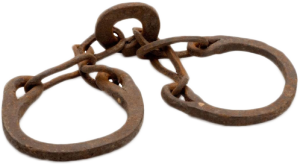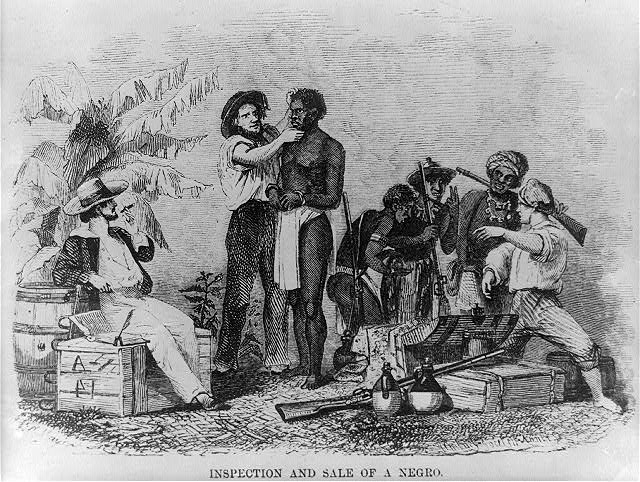
More than 300 years ago, three African-born slaves died on the Caribbean island of Saint Martin. No written records memorialized their fate, and their names and precise ethnic background remained a mystery. For centuries, their skeletons were subjected to the hot, wet weather of the tropical island until they were unearthed in 2010 during a construction project in the Zoutsteeg area of the capital city of Philipsburg.
Now researchers at the Stanford University School of Medicine and the University of Copenhagen have extracted and sequenced tiny bits of DNA remaining in the skeletons’ teeth. From this data, they were able to determine where in Africa the individuals likely lived before they were captured and enslaved.
The research marks the first time that scientists have been able to use such old, poorly preserved DNA to identify with high specificity the ethnic origins of long-dead individuals. The finding paves the way for a greater understanding of the patterns of the trans-Atlantic slave trade, and may transform the general practice of genealogical and historical research.
“Through the barbarism of the middle passage, millions of people were forcibly removed from Africa and brought to the Americas,” said Carlos Bustamante, PhD, professor of genetics at Stanford. “We have long sought to use DNA to understand who they were, where they came from, and who, today, shares DNA with those people taken aboard the ships. This project has taught us that we cannot only get ancient DNA from tropical samples, but that we can reliably identify their ancestry. This is incredibly exciting to us and opens the door to reclaiming history that is of such importance.”
_________________________________________
 Inspection and sale of a ‘negro’, or slave from Africa. Wikimedia Commons
Inspection and sale of a ‘negro’, or slave from Africa. Wikimedia Commons
________________________________________
A new tool
The researchers used a technique recently devised in the Bustamante laboratory called whole-genome capture to isolate enough ancient DNA from the skeletons to sequence and analyze. In this way, they learned that one skeleton was that of a man who had likely belonged to a Bantu-speaking group in northern Cameroon. The other two shared similarities with non-Bantu-speaking groups in present-day Nigeria and Ghana.
Bustamante is co-author of a paper describing the research. It will be published online March 9 in the Proceedings of the National Academy of Sciences. The study was led by Hannes Schroeder, PhD, a molecular anthropologist from the University of Copenhagen, and Stanford postdoctoral scholar Maria Avila-Arcos, PhD. The research was initiated in Denmark, and the senior author of the study is Thomas Gilbert, PhD, of the University of Copenhagen.
Bustamante is well-known for his studies of the ethnic background of native Mexicans and Caribbean dwellers, as well as for using genomics to study the patterns of human migration from North Africa to southern Europe.
“Several years ago, we were part of the team that sequenced the genome of Otzi, the iceman, and we were able to show that the people alive today that most closely match him genetically are Sardinians,” said Bustamante. “This incredible precision was possible because we, as a community, had invested lots of resources in understanding patterns of DNA variation in Europe. I started to talk about the ‘Otzi rule,’ or the idea that we should be able to do for all people alive today what we can do for a 5,000-year-old mummy. However, few skeletons today are as well-preserved as Otzi, and not all are of European background.”
In the centuries of the Atlantic slave trade, the largest forced migration in history, more than 12 million enslaved Africans were shipped to the New World to work on plantations in eastern South America, the Caribbean, and portions of the eastern United States. Although some records were kept detailing the slaves’ departure from West and Central African ports, they are often incomplete. Furthermore, it is impossible to tell from the shipping records where in Africa individuals originated.
Researchers could tell from the skeletons found in the Zoutsteeg area that the three people were between 25 and 40 years old when they died in the late 1600s. The skulls of each also bore teeth that had been filed down in patterns characteristic of certain African groups. But this alone wasn’t enough to pinpoint where the individuals originated on the African continent.
Getting DNA from tooth roots
Schroeder and Avila-Arcos isolated DNA from the tooth roots of each of the skeletons. Although the tooth roots are relatively protected from the elements and from external contamination with unrelated genetic material, the DNA was very poorly preserved and highly fragmented — likely due to the centuries of hot, humid conditions the skeletons had endured. Initial DNA sequencing efforts rendered short stretches of highly damaged DNA.
The researchers turned to the whole-genome capture technique developed by study co-author Meredith Carpenter, PhD, a postdoctoral scholar in the Bustamante laboratory, to fish out snippets of ancient DNA from the mixture. The approach exposes the DNA sample to a genome-wide panel of human-specific RNA molecules to which the degraded DNA in the sample can bind. The effect is somewhat like stirring a pile of iron-rich dirt with a powerful magnet to isolate the metal from the soil, and it allowed the researchers to concentrate the ancient DNA for more efficient sequencing.
They then used a different technique called principal component analysis to compare the DNA sequences of the enslaved Africans with a reference panel of 11 West African populations and identify the distinct ethnic groups from which each individual likely originated. The findings illuminate a tumultuous period of time in the Americas and may provide insight into subsequent population patterns and perceived ethnic identities.
“We were able to determine that, despite the fact that the three individuals were found at the same site, and may even have arrived on the same ship, they had genetic affinities to different populations within Africa,” said Avila-Arcos. “They may have spoken different languages, making communication difficult. This makes us reflect on two things: the dynamics of the trans-Atlantic slave trade within Africa, and how this dramatic, ethnic mingling may have influenced communities and identities in the Americas.”
_________________________________________________________
Other Stanford authors are graduate student David Poznik and former postdoctoral scholar Martin Sikora, PhD.
The research was supported by the Danish National Research Foundation, the Directorate General for Research and Innovation of the European Commission, the European Research Council, the U.S. National Science Foundation, the Swiss National Science Foundation, the National Institutes of Health (grant numbers 5F32HG007342 and K99GM104158), a Leverhulme Early Career Fellowship, the Ministerio de Ciencia e Innovacin, the Plan Galego IDT, the Sistema Universitario Gallego-Modalidad REDES, the Xunta de Galicia, the Lundbeck Foundation and the Danish Council for Independent Research.
Bustamante is the founder of IdentifyGenomics LLC, and is on the scientific advisory board of Personalis Inc. and Ancestry.com, as well as the medical advisory board of InVitae. Carpenter is now the chief scientific officer at IdentifyGenomics.
Information about Stanford’s Department of Genetics, which also supported the work, is available at http://genetics.stanford.edu.
The Stanford University School of Medicine consistently ranks among the nation’s top medical schools, integrating research, medical education, patient care and community service. For more news about the school, please visit http://med.stanford.edu/school.html. The medical school is part of Stanford Medicine, which includes Stanford Health Care and Lucile Packard Children’s Hospital Stanford. For information about all three, please visit http://med.stanford.edu.
_______________________________________________________
Source: Stanford University Medical Center
_______________________________________________________
Read about the most fascinating discoveries with a premium subscription to Popular Archaeology Magazine. Find out what Popular Archaeology Magazine is all about. AND MORE:
On the go? Get the smartphone version of Popular Archaeology as an app or as an ebook.
Just released!
The special new premium quality print edition of Popular Archaeology Magazine. A beautiful volume for the coffee table.
Travel and learn with Far Horizons.
____________________________________________
Popular Archaeology’s annual Discovery Edition eBook is a selection of the best stories published in Popular Archaeology Magazine in past issues, with an emphasis on some of the most significant, groundbreaking, or fascinating discoveries in the fields of archaeology and paleoanthropology and related fields. At least some of the articles have been updated or revised specifically for the Discovery edition. We can confidently say that there is no other single issue of an archaeology-related magazine, paper print or online, that contains as much major feature article content as this one. The latest issue, volume 2, has just been released. Go to the Discovery edition page for more information.









